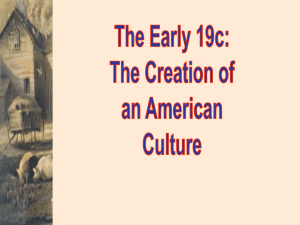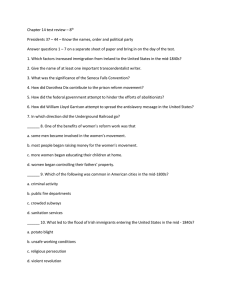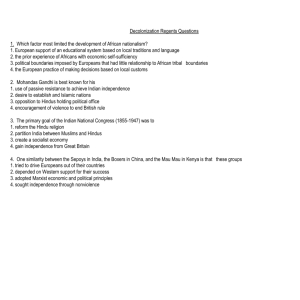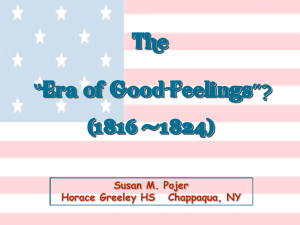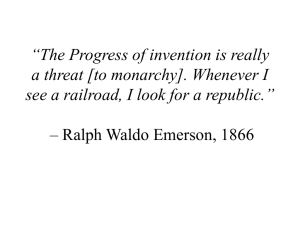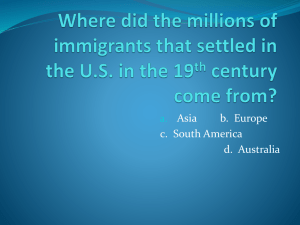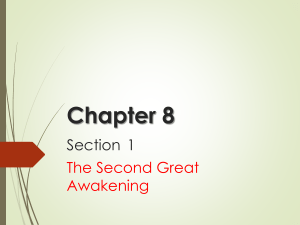File
advertisement
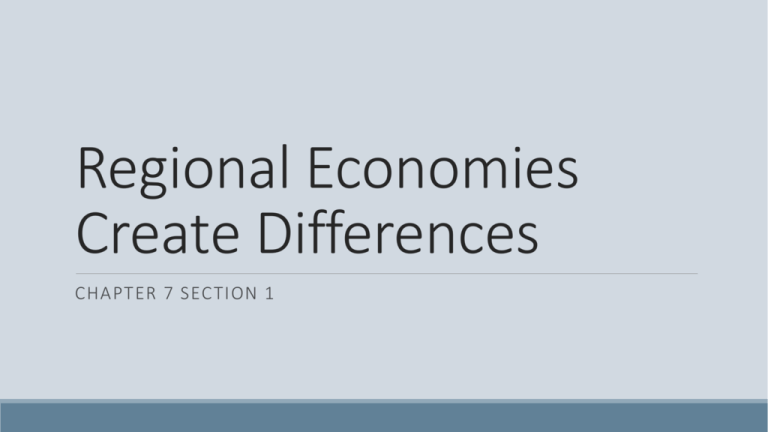
Regional Economies Create Differences CHAPTER 7 SECTION 1 Another Revolution Affects America Industrial Revolution: Machines replaced hand tools and created large scale factory production, which allowed mass production of goods. After the Revolutionary War, the US focused on Trade instead of creating their own goods. Thomas Jefferson would convince the US to turn inward, and start creating domestic industry. ◦ This would kill the shipping industry New England focused on creating an industry: ◦ They created Textiles ◦ Thread ◦ Later the actual cloth Two Economic Systems Develop Agriculture in the North: ◦ ◦ ◦ ◦ Small farms Low Labor Crops that would flourish No Slaves Agriculture in the South ◦ Cotton Gin-helped speed up the harvest ◦ Large Farms-Plantations ◦ Large Slave work force Clay Proposes the American System A plan to unify the two plans was proposed by President Madison in 1815: ◦ Developing transportation systems and other internal improvements ◦ Establishing a protective tariff ◦ Resurrecting the National Bank Henry Clay, promoted this as the American System ◦ ◦ ◦ ◦ Uniting the nation’s Economic interests The North would produce goods for the South to buy The South would provide raw textiles for the North The South would feed the North The National Road and the Erie Canal would help lower cost of industry and trade. Tariffs would be introduced to help pay for the internal improvements. Nationalism at Center Stage CHAPTER 7 SECTION 2 The Supreme Court Boosts National Power Gibbons v Ogden ◦ Commerce across state lines, Steamboat monopoly McCulloch v Maryland ◦ Strengthened the Federal Government, National over State Gov., Denied the taxing of a National Bank Fletcher v Peck ◦ Disallowed the state interfering in contracts Nationalism Shapes Foreign Policy Nationalism: the belief that national interest should be placed ahead of regional concerns of the interest of other countries. ◦ Pushes the US West Spain gives Florida and Oregon to US. The push to expand the Territory of the US fell short with the Monroe Doctrine. ◦ No one was going to colonize the Western Hemisphere, or else! The Missouri Compromise: Dividing the new Louisiana Territory into slave and free states at the Missouri state line. The Second Great Awakening Second Great Awakening: Religious movement that swept across the nation ◦ Pushed the idea that, God did not predetermine if you were going to Heaven or Hell, but people could improve themselves and society to get to heaven. Revivals would pop up across the country with 20,000 plus people attending. This would bring in a lot of slaves and African Americans, and would create the African American Church. At this time education and prison reform would also take place, to create a uniform set of rules for the education and care of people. Transcendentalism and Reforms Transcendentalism: a movement that emphasized living a simple life and celebrated the truth found in nature and in personal emotion and imagination. Authors promoted the idea of optimism, freedom, and self reliance Civil Disobedience: refuse to follow laws they do not want to follow, but do it in a peaceful manner. Movement to resettle the African Americans back in Africa. Abolition: the call to outlaw slavery.

